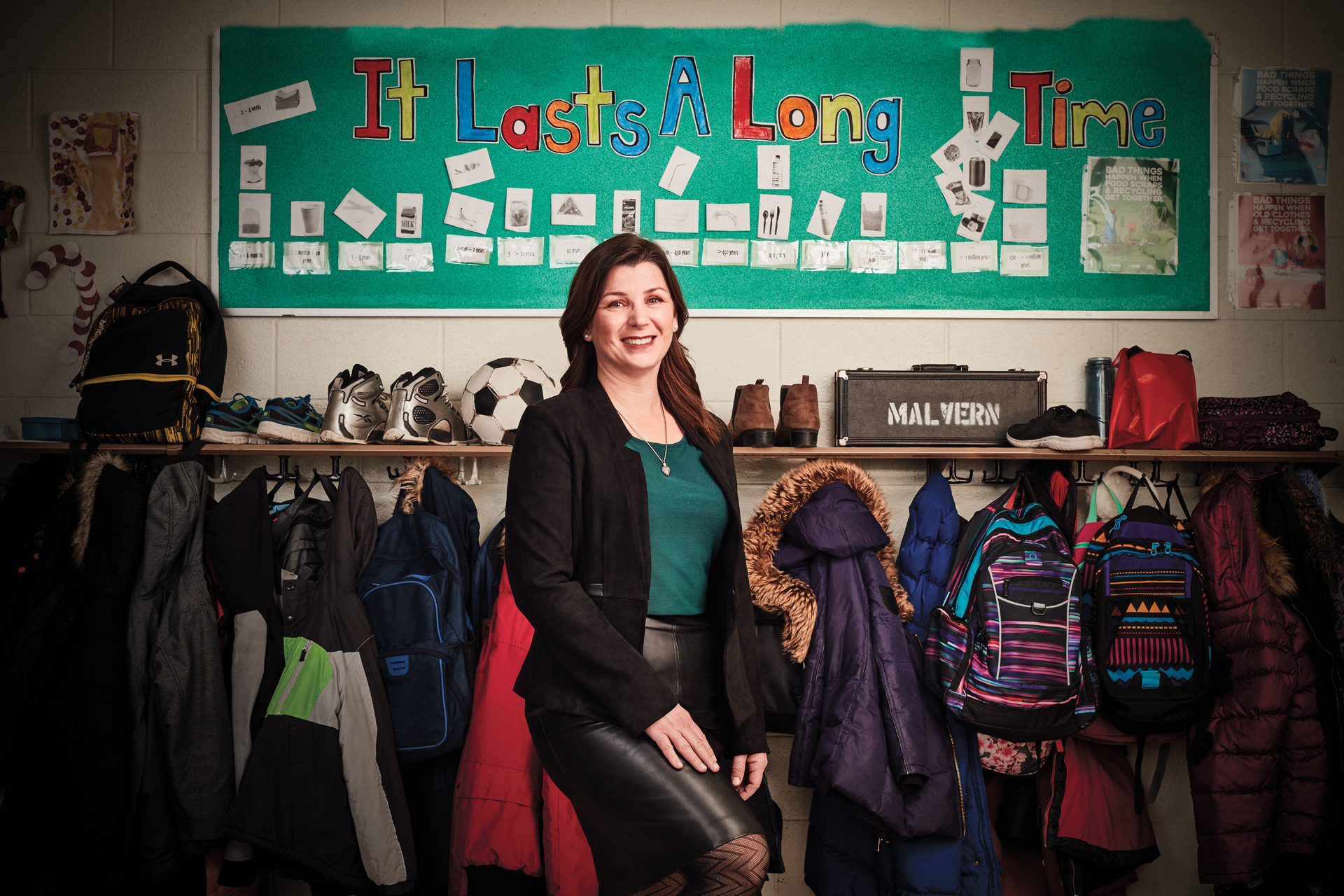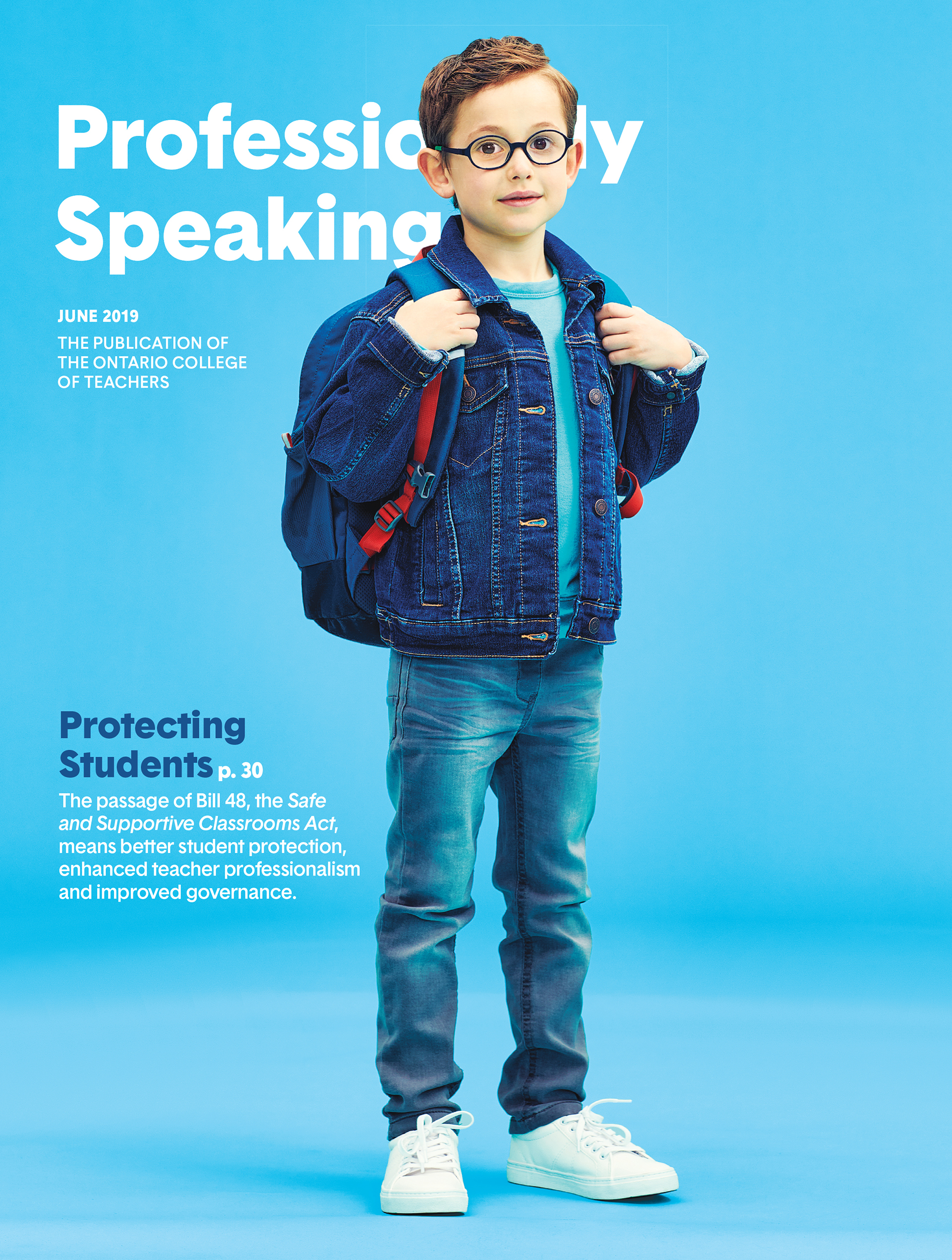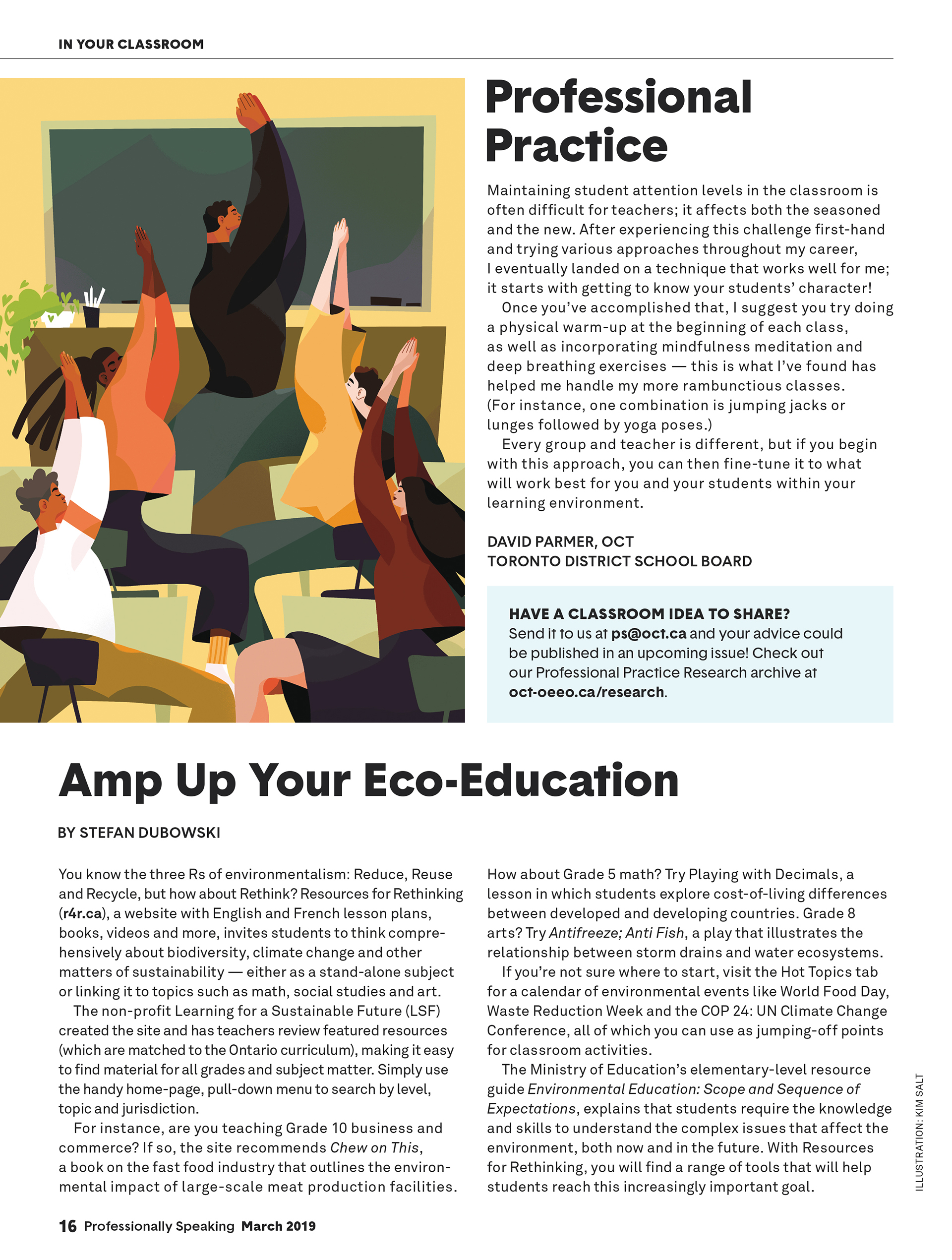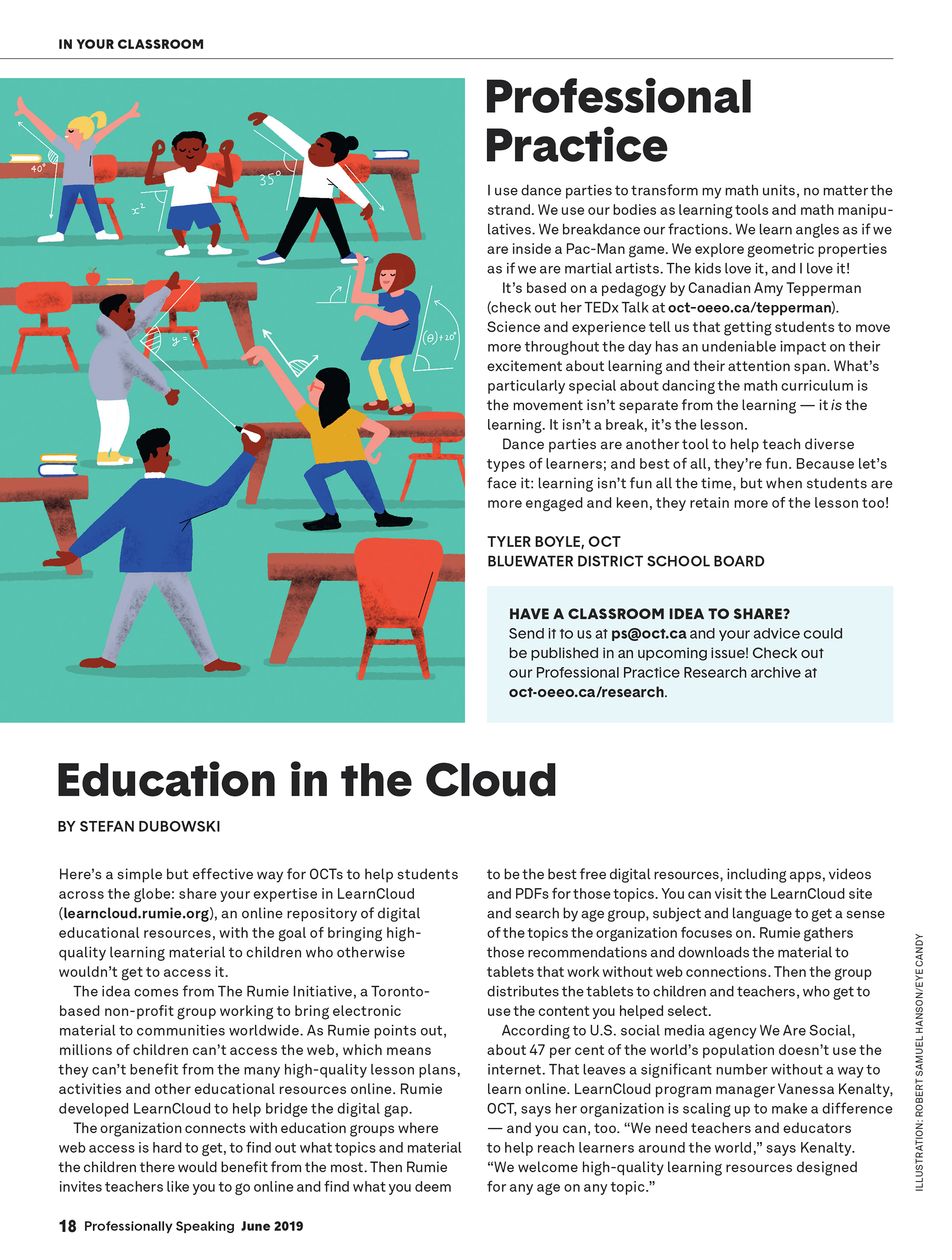Share this page
Professionally Speaking welcomes letters to the editor. We reserve the right to edit letters for length and to conform to our publication style. To be considered for publication, letters should be in response to an article or ad published in the magazine and include the writer’s daytime phone number and registration number. Address letters to: The Editor, Professionally Speaking at ps@oct.ca or 101 Bloor St. W., Toronto, ON M5S 0A1.

I write in deep concern over the March 2019 article “Great Teaching: A Natural Resource.” I appreciate that this article was attempting to share progress in the global energy/environment curriculum and that the teacher has done significant work toward this. However, the uncritical article highlights pedagogy that is patronizing at best. This portrayal of an “African childhood” as one that entails hauling water over great distances and the broader insinuations of a poverty spectacle needing “empathy” generates the customary characterization of Africans as a monolithic, homogenous people, overwhelmed by privation and beggary, whose sole salvation relies on Western intervention.
What is most concerning is that there was no editorial scrutiny at the College to prevent such an article from being published in the first place. Is the College another institution of privilege, maintaining the status quo, rather than an agent of change to promote equitable practice? As teachers, we must strive to shatter stereotypes and contest prejudice and oppression in order to safeguard and champion the very students before us. This letter is an invitation to a critical conversation for all who are interested in equity, anti-racist pedagogy and justice, beyond what is presented in this article. I look forward to engaging in an open, reflective and constructive dialogue.
Tigist Amdemichael, OCT, is a program leader (science, math & business) with the City Adult Learning Centre in the Toronto District School Board.

A recent trip to England alerted me to the fact that one in four U.K. teachers experiences physical violence from their pupils at least once a week (The Guardian, April 20, 2019). Upon return to Canada, I found a copy of Professionally Speaking in my mailbox with a cherubic Harry Potter look-alike on the cover to showcase the article about protecting students from teachers’ abuse. Good for us, you might say: the British worry about student assault, and we only need to rein in those pesky teachers abusing their authority in the classroom.
A quick Google search, however, confirms what I already know from direct experience: a recent Canadian Teachers’ Federation study reveals that at least four in 10 Canadian teachers have experienced physical violence from students. So, we have a 25 per cent student assault rate in the United Kingdom versus 40 per cent in Canada: a very alarming discrepancy. Even more alarming is the silence cloaking such statistics in publications like Professionally Speaking. Don’t you think that such data deserves a feature in our magazine, by our self-regulatory body, with a suitable image on the cover?
Mirek Lalas, OCT, is a department head with the York Region District School Board.

I am writing in response to the provocative and interesting letter: “Faith-based practices in the classroom?” in the June 2019 issue.
Yoga and mindfulness can be excellent calming activities for children. Learning how to deal with emotions such as anger, anxiety and stress can empower children to make healthier choices about how to respond to these emotions.
The letter’s author suggests that teachers simply Google the origins of a practice or activity, in order to ultimately avoid “the possibility of inadvertently exposing students to practices that are not permitted in their faith.” I expect that this endeavour might often yield lengthy and conflicting results. Also, I do not expect that such a search could possibly reflect the multiple lenses with which our multicultural and multi-faith society might view such programs.
Therefore, I wonder if instead of focusing on the divisive aspects of a practice, school communities could promote inclusivity through a collaborative 21stcentury approach. Is it possible to prioritize the potential value of such programs to all students’ overall well-being and learning, while still remaining sensitive and responsive to parent concerns?
Beverley MacLean-Lindsay, OCT, a former public health nurse, is a primary and junior teacher with a master’s degree in professional education who is currently a continuing education supply instructor for adult English as a Second Language students.
I am writing in response to a letter in the June issue about faith-based practices in the classroom. The author’s suggestion that we not use yoga because of its roots in Hinduism are misguided at best and xenophobic at worst. The author writes, “Some other faiths strictly forbid the practice of participating in activities of another faith.” If the author is arguing for secularism, why adhere to these intolerant “other faiths”?
Our school system is far from purely secular, anyway. When I was growing up in Sarnia, we said the Lord’s Prayer every morning. We still have holidays for Christmas and Easter. We teach every English-speaking student in the province to sing “God, keep our land …” as part of our national anthem. Our province is one of the last three in the country that still publicly funds a Catholic school board. There are other remnants of a Judeo-Christian world view throughout our school system that, despite their subtlety, are more obviously religious than the Hindu origins of what is essentially stretching and breathing.
The 2010 Health and Physical Education curriculum mentions yoga 15 times. If any parent wants to “take a school board to task” over yoga in the classroom, the argument is clear that the teacher was only following the curriculum. It is but a modicum of curriculum content that acknowledges the histories of hundreds of thousands of Ontario students of Asian descent, amidst a curriculum still largely based on tenets of European culture.
Randy Ray, OCT, is a Grade 5/6 French Immersion teacher at Corvette Junior Public School with the Toronto District School Board.

On page 18 of the June 2019 edition of Professionally Speaking, the illustration that accompanies the Professional Practice article is not mathematically accurate.
Even my Grade 6 students immediately noticed — without the use of a protractor — that some of the angles as written are not even close to the angles the bodies are making. For example, simply looking at the two angles the illustrator has labelled as 40 and 35 degrees (which would make them acute) shows them both to be obtuse (greater than 90 degrees).
Roberta (Bobbie) Brooks, OCT, is a Grade 6 teacher at St. Teresa of Calcutta Catholic Elementary School with the Windsor Essex Catholic District School Board.
Editor’s Response: You are absolutely right. We should have caught that. By the way, it’s great to hear that your students were engaging with the magazine.